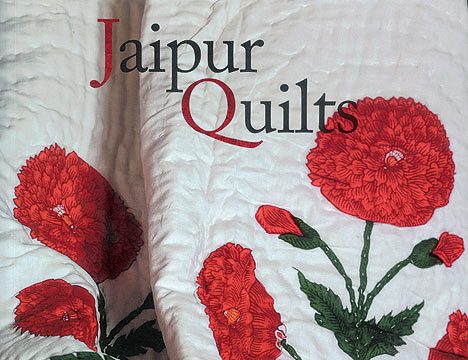The book Jaipur Quilts was a fast read thanks to a combination of the author Krystyna Hellström’s rambling style and the large type; but it took me a while to get into the book. The author is as distractingly predisposed to rhapsodise about Jaipur as she is intent on documenting the craft of quilting. A statement like “… everybody looks incredibly good in Jaipur!”, and her incredulity at the artisans’ inability to understand how their work is so special, can be mildly annoying. It was exasperating for this reader who has spent time enough with craftspeople to know that, often, artisans have only one skill and they depend on it for their livelihood. It is easy to understand why they don’t look at their work in terms of art and aesthetics. As a blockmaster named Ezo pointed out to her — “it is just another job!”
If you can get used to her giddy tone, you might learn a bit about the process of quilt-making. What interested me in the book, however, was Hellström’s documentation of a few generations of textile revivalists in Jaipur — Kitty Rae, who revived the tradition of block printing and popularised designer quilts; Brigitte Singh, who changed the vocabulary of prints and patterns by reintroducing Mughal motifs; collector of antique textiles, Subhash Sharma; and textile entrepreneurs Radha Krishnan Nair and Andree Pouliot of Soma; Gitto of Surabhi Exports; and Madhulika Singh and Manish Tibrewal of Rasa. Theirs are interesting stories for any textile enthusiast. When I picked up this book, I was looking forward to references and comparisons between the Indian and the French quilt. Though Hellström begins to talk about quilting in Europe and the role of gender politics in determining quilting as an art form, she waltzes away rather too quickly from what could have been a compelling chapter. This is evidently her ode to the Jaipur quilt.




